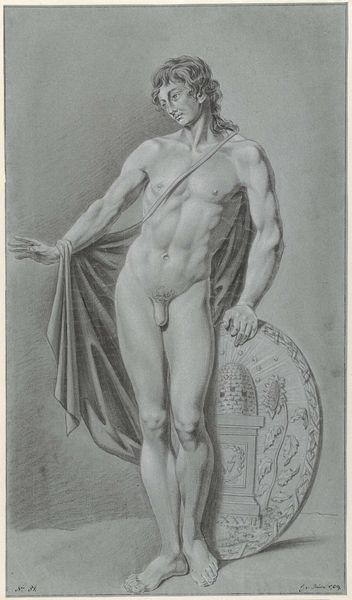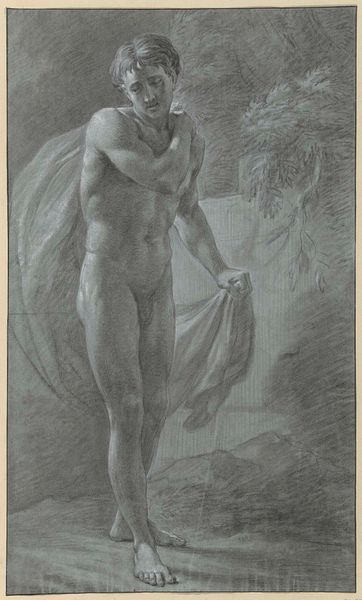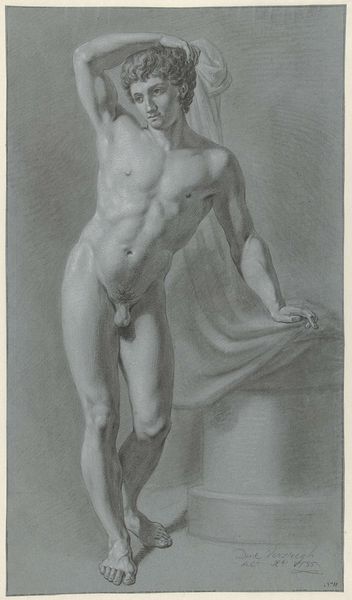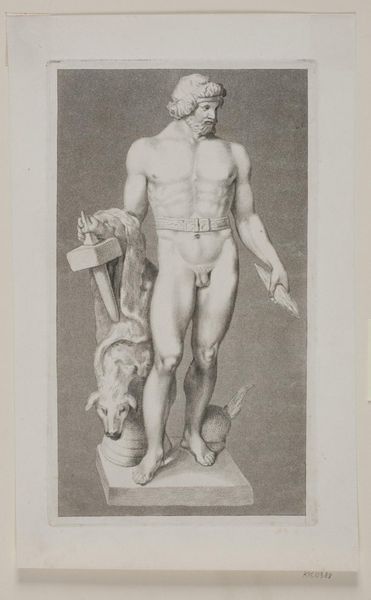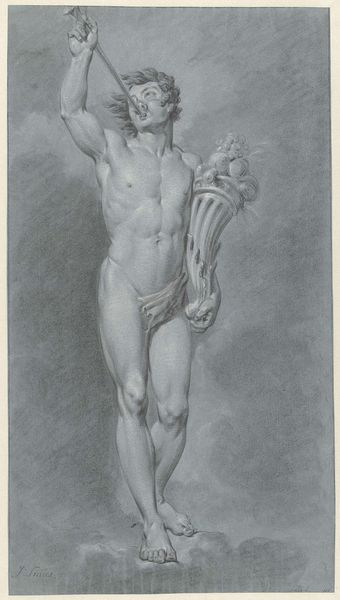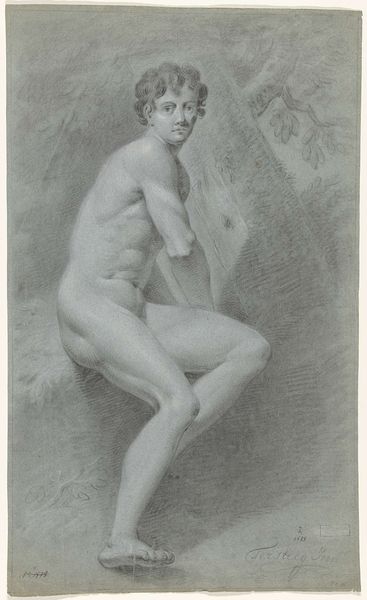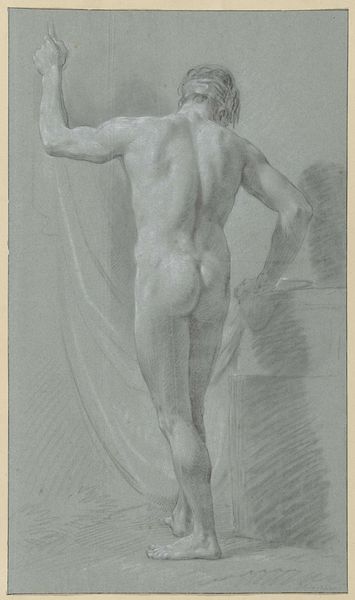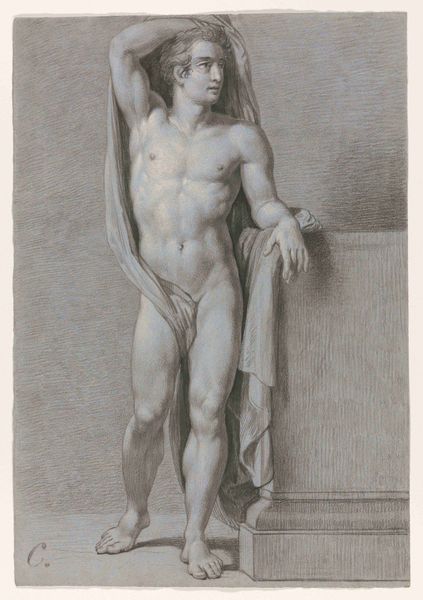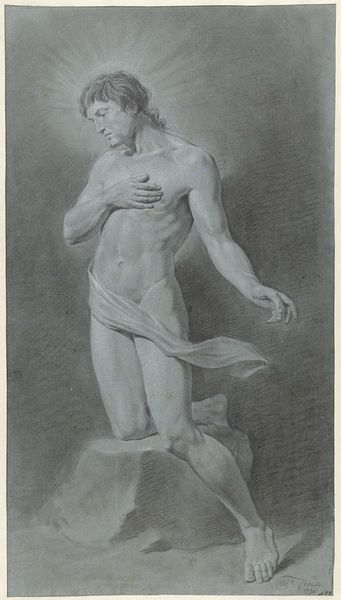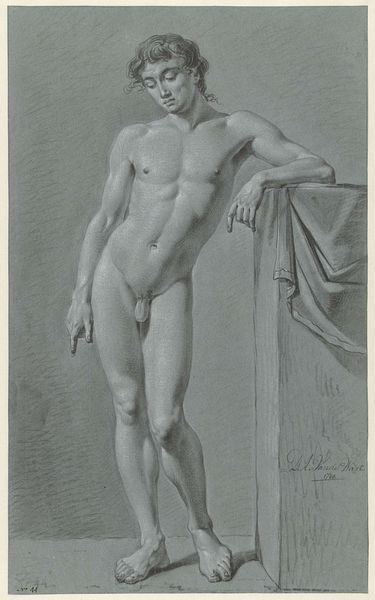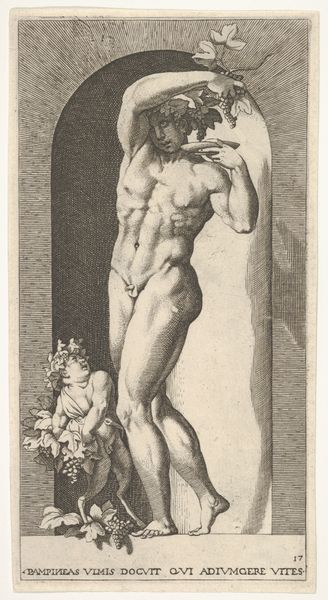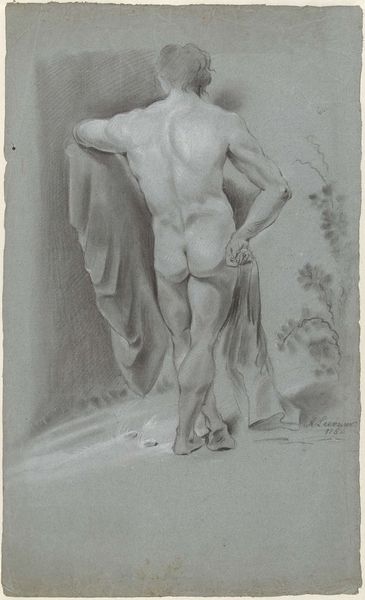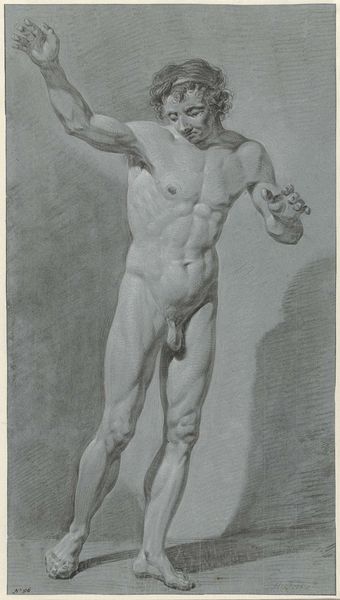
drawing, charcoal
#
portrait
#
drawing
#
dog
#
landscape
#
charcoal drawing
#
figuration
#
romanticism
#
charcoal
#
nude
Dimensions: height 538 mm, width 315 mm
Copyright: Rijks Museum: Open Domain
Editor: Here we have Jan Kamphuijsen's charcoal drawing from 1790, “Standing Male Nude with a Dog and the Head of a Wild Boar.” I'm struck by the contrast between the idealized, almost classical, figure and the rather unsettling presence of the boar’s head. How do you interpret this work? Curator: Well, let's consider the social and cultural context of the late 18th century. The French Revolution had just happened, so concepts around social order were being actively examined. How do you think displaying this nude male within this historical period plays with those concepts of public and private life? Editor: I guess presenting a nude form might have been seen as a radical or perhaps even a challenging artistic statement, given the political climate at the time. It draws on classical artistic tradition to depict the ideal male form but it's in this tense socio-political landscape. Curator: Precisely. The dog, then, reinforces his masculinity, as the pair engage in hunting together. Note the tension, or the dynamic, presented by including the boar's head. The dog looks at the hunter; they are an established hierarchy. Do you think this contrasts with how an earlier Dutch master might portray this hierarchy, or how they were perceived? Editor: Good point. The boar is, strangely, smiling. In that light, perhaps the drawing isn't just about idealized masculinity or dominance but also hints at some subtle instability, even humor, in the existing social structures. Curator: Exactly! We must always analyze a work within the institutional context it was meant to inhabit; in this case, within a society ready to cast off old notions of status. Editor: I hadn't thought of it that way. Seeing it through that lens gives the artwork so much more depth. Curator: The beauty of art history is always rooted in what history, or culture, dictates.
Comments
No comments
Be the first to comment and join the conversation on the ultimate creative platform.
